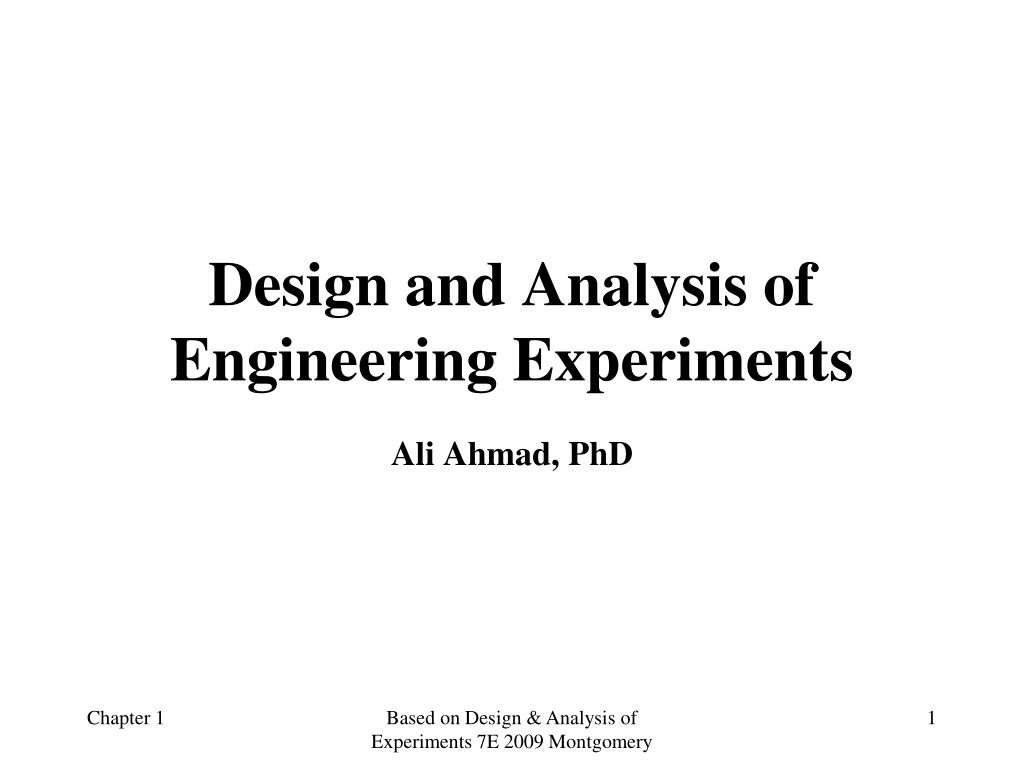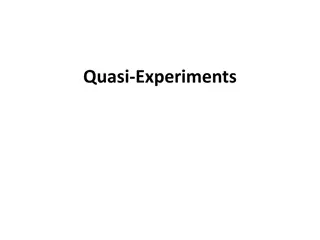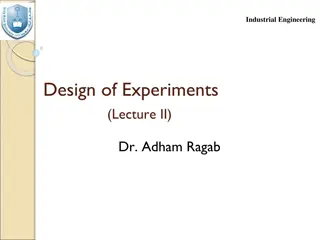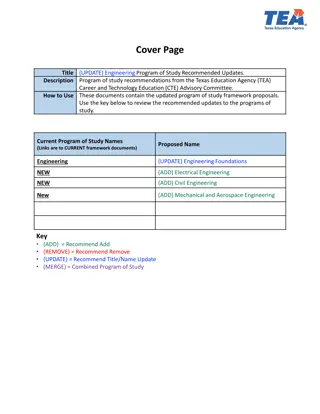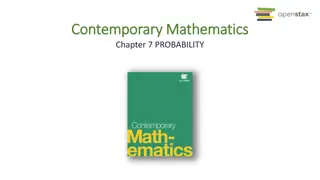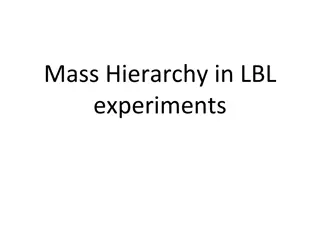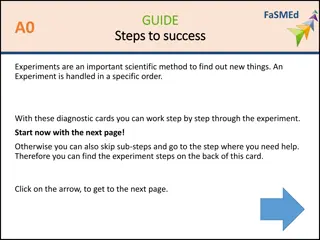Design and Analysis of Engineering Experiments in Practice
Explore the fundamentals of engineering experiments, including blocking and confounding systems for two-level factorials. Learn about replicated and unreplicated designs, the importance of blocking in a replicated design, ANOVA for blocked designs, and considerations for confounding in blocks. Dive into examples and calculations to enhance your understanding of experimental design concepts.
Download Presentation

Please find below an Image/Link to download the presentation.
The content on the website is provided AS IS for your information and personal use only. It may not be sold, licensed, or shared on other websites without obtaining consent from the author.If you encounter any issues during the download, it is possible that the publisher has removed the file from their server.
You are allowed to download the files provided on this website for personal or commercial use, subject to the condition that they are used lawfully. All files are the property of their respective owners.
The content on the website is provided AS IS for your information and personal use only. It may not be sold, licensed, or shared on other websites without obtaining consent from the author.
E N D
Presentation Transcript
Design and Analysis of Engineering Experiments Ali Ahmad, PhD Chapter 1 Based on Design & Analysis of Experiments 7E 2009 Montgomery 1
Design of Engineering Experiments Blocking and Confounding Systems for Two-level factorials Blocking is a technique for dealing with controllable nuisance variables Two cases are considered Replicated designs Unreplicated designs Chapter 7 Design & Analysis of Experiments 7E 2009 Montgomery 2
Blocking a Replicated Design This is the same scenario discussed previously (Chapter 5, Section 5.6) If there are n replicates of the design, then each replicate is a block Each replicate is run in one of the blocks (time periods, batches of raw material, etc.) Runs within the block are randomized Chapter 7 Design & Analysis of Experiments 7E 2009 Montgomery 3
Blocking a Replicated Design Consider the example from Section 6-2; k = 2 factors, n = 3 replicates This is the usual method for calculating a block sum of squares 2 i 2 ... 3 B y = SS Blocks 1 4 6.50 12 = i = Chapter 7 Design & Analysis of Experiments 7E 2009 Montgomery 4
ANOVA for the Blocked Design Page 267 Chapter 7 Design & Analysis of Experiments 7E 2009 Montgomery 5
Confounding in Blocks Now consider the unreplicated case Clearly the previous discussion does not apply, since there is only one replicate To illustrate, consider the situation of Example 6.2, the resin plant experiment This is a 24, n = 1 replicate Chapter 7 Design & Analysis of Experiments 7E 2009 Montgomery 6
Experiment from Example 6.2 Suppose only 8 runs can be made from one batch of raw material Chapter 7 Design & Analysis of Experiments 7E 2009 Montgomery 7
The Table of + & - Signs, Example 6-4 Chapter 7 Design & Analysis of Experiments 7E 2009 Montgomery 8
ABCD is Confounded with Blocks (Page 279) Observations in block 1 are reduced by 20 units this is the simulated block effect Chapter 7 Design & Analysis of Experiments 7E 2009 Montgomery 9
Effect Estimates Chapter 7 Design & Analysis of Experiments 7E 2009 Montgomery 10
The ANOVA The ABCD interaction (or the block effect) is not considered as part of the error term The reset of the analysis is unchanged from the original analysis Chapter 7 Design & Analysis of Experiments 7E 2009 Montgomery 11
Another Illustration of the Importance of Blocking Now the first eight runs (in run order) have filtration rate reduced by 20 units Chapter 7 Design & Analysis of Experiments 7E 2009 Montgomery 12
The interpretation is harder; not as easy to identify the large effects One important interaction is not identified (AD) Failing to block when we should have causes problems in interpretation the result of an experiment and can mask the presence of real factor effects Chapter 7 Design & Analysis of Experiments 7E 2009 Montgomery 13
Confounding in Blocks More than two blocks (page 282) The two-level factorial can be confounded in 2, 4, 8, (2p, p > 1) blocks For four blocks, select two effects to confound, automatically confounding a third effect See example, page 282 Choice of confounding schemes non-trivial; see Table 7.9, page 285 Partial confounding (page 285) Chapter 7 Design & Analysis of Experiments 7E 2009 Montgomery 14
General Advice About Blocking When in doubt, block Block out the nuisance variables you know about, randomize as much as possible and rely on randomization to help balance out unknown nuisance effects Measure the nuisance factors you know about but can t control (ANCOVA) It may be a good idea to conduct the experiment in blocks even if there isn't an obvious nuisance factor, just to protect against the loss of data or situations where the complete experiment can t be finished Chapter 7 Design & Analysis of Experiments 7E 2009 Montgomery 15
